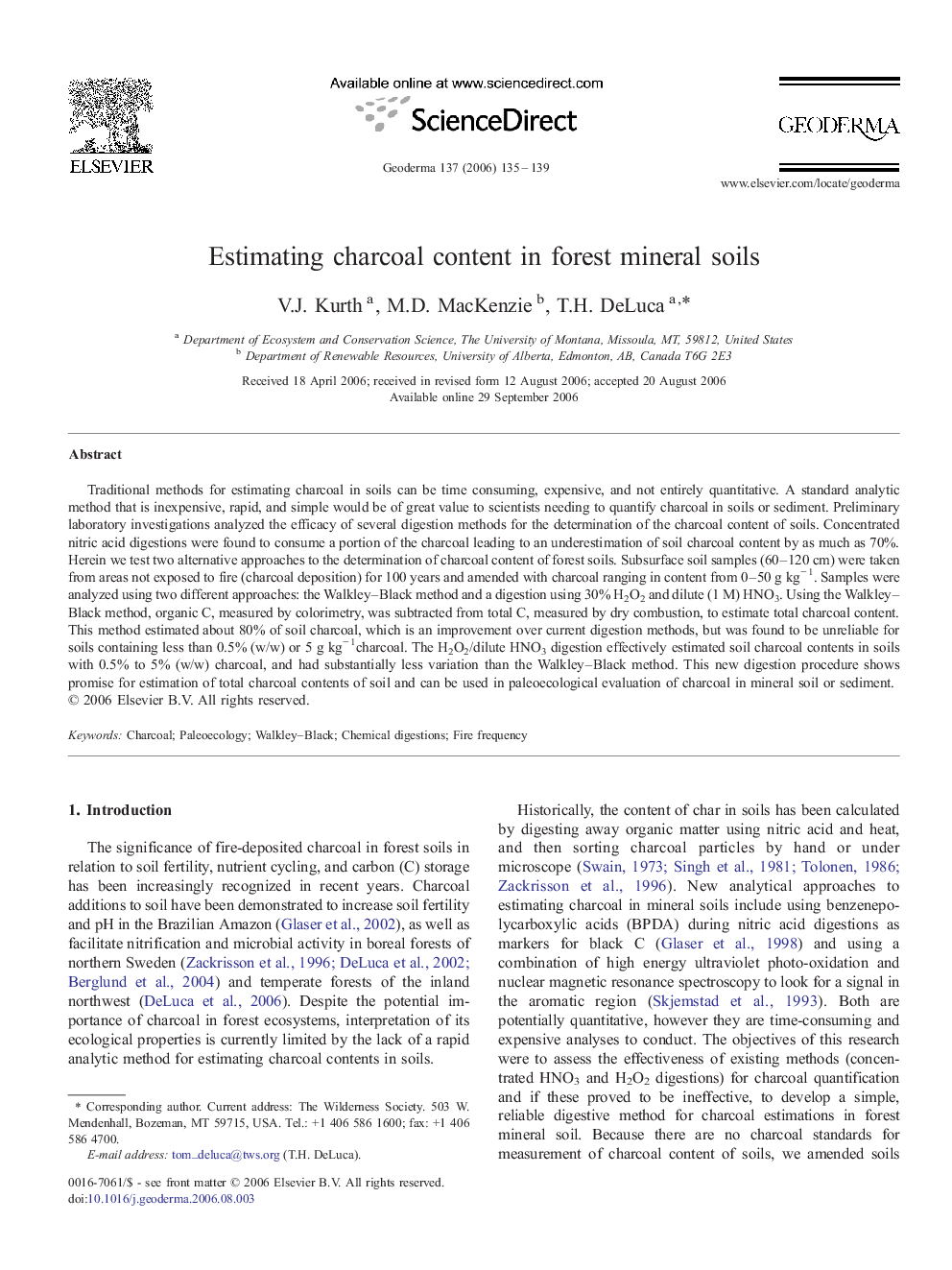| Article ID | Journal | Published Year | Pages | File Type |
|---|---|---|---|---|
| 4575533 | Geoderma | 2006 | 5 Pages |
Traditional methods for estimating charcoal in soils can be time consuming, expensive, and not entirely quantitative. A standard analytic method that is inexpensive, rapid, and simple would be of great value to scientists needing to quantify charcoal in soils or sediment. Preliminary laboratory investigations analyzed the efficacy of several digestion methods for the determination of the charcoal content of soils. Concentrated nitric acid digestions were found to consume a portion of the charcoal leading to an underestimation of soil charcoal content by as much as 70%. Herein we test two alternative approaches to the determination of charcoal content of forest soils. Subsurface soil samples (60–120 cm) were taken from areas not exposed to fire (charcoal deposition) for 100 years and amended with charcoal ranging in content from 0–50 g kg− 1. Samples were analyzed using two different approaches: the Walkley–Black method and a digestion using 30% H2O2 and dilute (1 M) HNO3. Using the Walkley–Black method, organic C, measured by colorimetry, was subtracted from total C, measured by dry combustion, to estimate total charcoal content. This method estimated about 80% of soil charcoal, which is an improvement over current digestion methods, but was found to be unreliable for soils containing less than 0.5% (w/w) or 5 g kg− 1charcoal. The H2O2/dilute HNO3 digestion effectively estimated soil charcoal contents in soils with 0.5% to 5% (w/w) charcoal, and had substantially less variation than the Walkley–Black method. This new digestion procedure shows promise for estimation of total charcoal contents of soil and can be used in paleoecological evaluation of charcoal in mineral soil or sediment.
